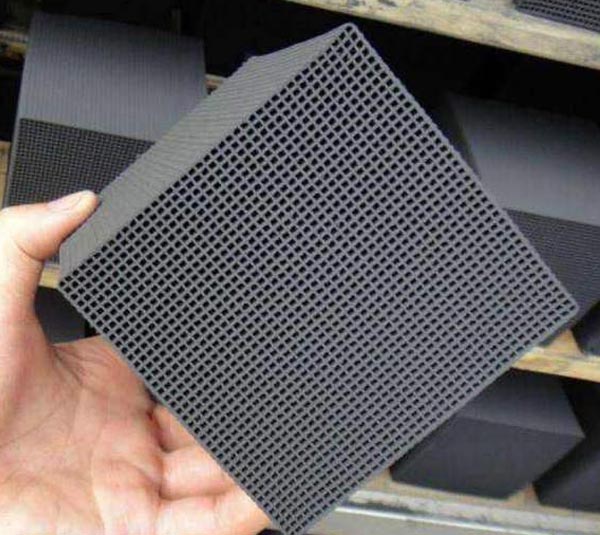
Honeycomb zeolite molecular sieve Its main material is natural zeolite, which is composed of SiO2 Inorganic microporous material composed of Al2O3 and alkaline metal or alkaline earth metal, with inner pore volume accounting for 40-50% of the total volume and specific surface area of 300-1000 m2/g, has the characteristics of high temperature resistance, non flammability, good thermal stability and hydrothermal stability. It is an efficient molecular sieve carrier with good adsorption performance, no secondary pollution, and can be regenerated at high temperature, which is better than similar carriers Activated carbon The efficiency is increased by 40%, which is widely used in the fields of adsorption, separation, catalysis and environment, and is more suitable for the treatment of organic waste gas with large air volume and low concentration. The adsorption material has a stable ozone decomposition ability, which significantly improves the decomposition efficiency of VOCs. The adsorption material first forms a special structural effect through the combination design of silver and manganese, which can decompose ozone into active oxygen atoms, and then react with VOCs molecules to form carbon dioxide and water.
Zeolite molecular sieve Action mechanism of
Molecular sieve has clear pore cavity distribution, extremely high internal surface area (600m2/s), good thermal stability (1000 ℃), and adjustable acid site center. The acidity of molecular sieve mainly comes from three coordinated aluminum atoms and aluminum ions (AlO)+on the framework and in the pores. The OH based acid sensitive site center on the molecular sieve HY obtained by ion exchange, and the aluminum ion outside the framework will strengthen the acid site, forming the L acid site center. Polyvalent cations such as Ca2+, Mg2+and La3+can show the acid site center after exchange. The reduction of transition metal ions such as Cu2+and Ag+can also form acid site centers. In general, the higher the Al/Si ratio, the higher the specific activity of OH group. The modification of zeolite acidity can introduce protons through direct exchange of dilute hydrochloric acid. This method often leads to dealumination of molecular sieve framework. So NaY will become NH4Y and then HY.
Because there are uniform small internal pores in the structure of molecular sieves, when the molecular linearity of reactants and products is close to the pore size in the crystal, the selectivity of catalytic reaction often depends on the corresponding size of molecules and pore size. This selectivity is called shape selective catalysis. There are two mechanisms leading to shape selectivity. One is caused by the difference of diffusion coefficient of molecules participating in the reaction in the pore cavity, which is called mass transfer selectivity; The other is caused by the space limitation of the transition state of the catalytic reaction, which is called transition state selectivity.


